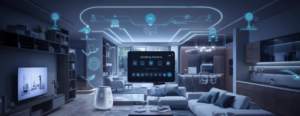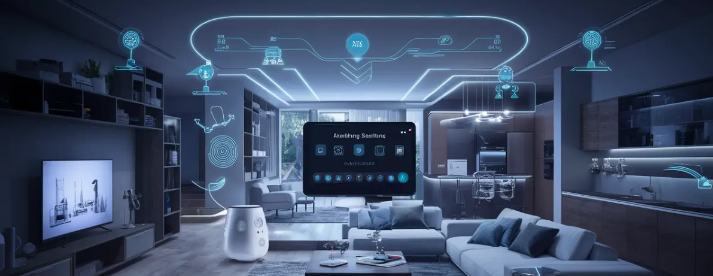Implementing a Smart Home Automation System with AI Integration
Smart home automation systems with AI integration enhance convenience, security, and energy efficiency in modern living spaces. This guide provides a step-by-step approach to implementing such a system.
Key Components and Materials
- Central Hub: Raspberry Pi, ESP32, or a dedicated smart home hub like Amazon Echo or Google Nest.
- Sensors:
- Motion sensors for detecting movement.
- Temperature and humidity sensors for environmental monitoring.
- Door/window sensors for security.
- Smart Devices:
- Smart lights, plugs, and thermostats.
- Smart locks and cameras for security.
- AI Assistant: Integration with Alexa, Google Assistant, or a custom AI model.
- Connectivity Modules: Wi-Fi, Zigbee, or Z-Wave for communication.
- Power Supply: Reliable power adapters and batteries for uninterrupted operation.
- Software: Home automation platforms like Home Assistant or OpenHAB.
- Smartphone/Tablet: For controlling and monitoring the system.
Step-by-Step Instructions
- Assess Your Needs
- Identify areas to automate, such as lighting, security, or climate control.
- List the devices and features you want to integrate.
- Set Up the Central Hub
- Configure a Raspberry Pi or use a dedicated hub as the brain of your system.
- Install home automation software (e.g., Home Assistant).
- Install and Configure Sensors
- Place motion sensors in strategic locations.
- Install temperature, humidity, and door/window sensors as needed.
- Connect sensors to the central hub via Wi-Fi or other protocols.
- Integrate Smart Devices
- Set up smart lights, plugs, and thermostats according to the manufacturer’s instructions.
- Add smart locks and cameras for enhanced security.
- Program Automation Routines
- Create routines for tasks like turning on lights when motion is detected.
- Set schedules for devices to optimize energy use.
- Use geofencing to trigger actions based on your location.
- Implement AI Integration
- Connect your system to Alexa, Google Assistant, or Siri for voice control.
- Train a custom AI model for advanced personalization using platforms like TensorFlow or PyTorch.
- Test and Optimize
- Test each device and routine to ensure seamless operation.
- Adjust settings for optimal performance and user comfort.
- Enhance Security
- Enable encryption and secure passwords for all devices.
- Use two-factor authentication for accounts linked to the system.
Challenges and Troubleshooting
- Connectivity Issues: Ensure strong Wi-Fi coverage or use range extenders.
- Device Compatibility: Verify that all devices support the chosen platform.
- Latency: Optimize network settings to reduce delays in response.
Additional Features
- Energy Monitoring: Track power usage and suggest optimizations.
- Custom Notifications: Receive alerts for unusual activities or maintenance reminders.
- Multi-User Access: Allow family members to control and monitor the system.
Safety and Maintenance Tips
- Regularly update firmware and software to protect against vulnerabilities.
- Back up configurations to prevent data loss.
- Avoid overloading power outlets connected to smart devices.
Conclusion
Implementing a smart home automation system with AI integration transforms living spaces into intelligent environments. By combining convenience, energy efficiency, and enhanced security, these systems offer a glimpse into the future of modern living. With continuous advancements in AI and IoT, the possibilities for innovation are endless.

Also Read :
- Mechanical Engineering: Breakthroughs in Robotics and Automation
- Home automation technology utilizes smart devices and systems to automate and control various aspects of the home environment,
- Bridging the Gap: Engineering Research in Affordable Housing
- Revolutionizing Agricultural Engineering with Robotics
- The Future of Wireless Communication: 6G Research Breakthroughs
